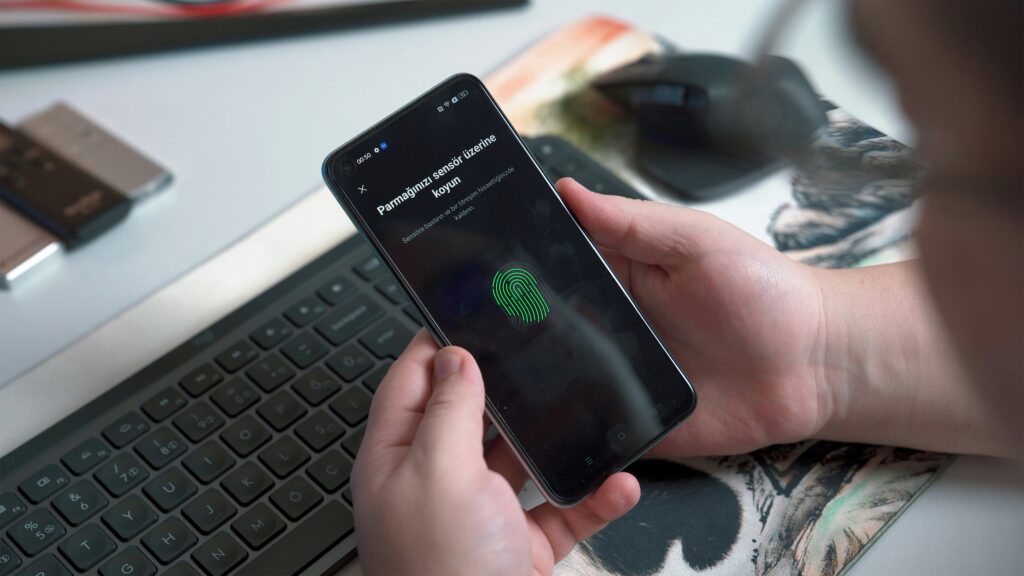The world is increasingly experiencing high connectivity. That is mainly due to the digital presence, which has largely been a part of the lives of Gen Zs and millennials. In this cyberspace, due to the increased connectivity and accessibility to technology, there is also a rise in cyber threats. The threats are not only towards organizations and businesses but also towards individual or personal data. The digital generation, which mainly comprises millennials and Gen Z, is evolving, resulting in heightened exposure to the benefits of the digital platforms as well as to digital security threats. Due to that, the two groups are increasingly growing concerned about their online privacy and are indicating a commitment towards having platforms that facilitate digital protection variably. The main focus of this research paper is to explore how Gen Z and millennials perceive and respond to digital security threats utilizing contemporary information. The analysis includes data on generational gaps in actions, awareness, and issues.
The world is increasingly facing digital threats, and due to that reality, a lot of people have grown wary of the digital space. These threats include attacks ranging from ransomware to malware on social media data, causing leaks, including in healthcare systems. According to IBM’s Cost of a Data Breach Report 2024, the expenses of data breaches have substantially risen to an average of $4.4 million globally, which is a significant increase. The increase in attack vectors, such as social engineering, mobile surveillance and phishing, creates a landscape where even tech-savvy users are exposed to different vulnerabilities. The issue is especially pressing for the generation that has grown up in the face of this evolving technology, which, as mentioned, includes Gen Z and millennials. A major reason for this is the significant portion of the generation utilizing the technologies to form their identities, including on online social media platforms. The values of the digital space extend to their academics, in that they utilize the technology to store academic records. The digital platforms have also been a significant asset in their mobile banking system, wherein the banks have utilized the technology to conduct their bank transactions while at the same time exposing the users, especially millennials and Gen Z, to digital threats. A 2023 Pew Research Center survey found that 81% of Americans feel uneasy about how businesses use their personally identifiable information, 73% suppose they have a negligible impact over how businesses use it, and 79% have similar concerns about government data accumulating (Pew Research Center). The information reflects the overall concern across generations.
Although there is a significant shared digital flow that is safe for the two generations, there is a difference in their privacy-related priorities and protection tendencies. For instance, millennials (born 1981–1996), having witnessed the rise of Facebook and email spam, have consistently indicated a higher probability of conducting or exercising caution in the use of the digital platforms. On the contrary, Gen Z (born 1997–2012), having been raised in the digital era (especially the rising use of smartphones and apps), are often focused on convenience and speedy connectivity over privacy issues. A study by Debb, Schaffer, and Colson discovered that millennials have an increased probability of updating their antivirus software, reading privacy terms, and recognizing potential phishing emails compared to their Gen Z counterparts (42–45). This “reverse digital divide” is an indication that digital familiarity does not necessarily equate to digital safety awareness.
One way Gen Z is ensuring privacy on digital platforms is by choosing simplified versions that include visual cues, such as permission summaries, rather than reading lengthy privacy policies. That is the pop-up approach, which involves allowing or not allowing an app to have access to one’s personal data, facilitating quick decision-making. As Setiawan explains, Gen Zs usually apply personal risk management in a more fluid manner. They also approached the situation with an understanding of the context, including switching platforms when privacy concerns arise and utilizing those platforms that have minimal-to-no issues with cybersecurity threats. They are more inclined to utilize or embrace encrypted messaging applications, a great example being the popular WhatsApp. They are also increasingly aware of the risks linked to location tracking and facial recognition, making them alert in different aspects. Regardless, their trust in the use of a particular application or platform often overrides caution, which substantially exposes them to hidden risks.
Another major difference in the response to data breaches or digital security threats is in the way each takes corrective action. For example, millennials are likely to change passwords, minimize permissions, and even enable two-step verification as a threat mitigation strategy. On the other hand, the Gen Z reaction often includes the deletion of an application or a resignation. Due to that, Generation Z are more likely than millennials to leave an application rather than attempting to secure their data or information. Such a reactive tendency is a reflection of the psychological change and shift whereby Gen Z, in case of any breach, are likely to feel that their control over the data is lost and that the best course of action is to opt out.
Changes in legal and corporate efforts to facilitate the protection of user privacy have had a significant impact. That includes areas where there are regulations mandating the protection of user data, such as General Data Protection Regulation (GDPR) in Europe and the California Privacy Rights Act (CPRA) in the US, which give users of the platforms significant control over their information. The rising demand for applications to ensure privacy has prompted tech companies to respond comprehensively as well, including by ensuring increased transparency in applications such as tracking apps. For example, Apple’s App Tracking Transparency (2021) permits users to block the apps from tracking their activity across other apps. This element is highly regarded and has been commended for the privacy it offers by privacy advocates. Still, as Kalloniatis and Travieso-Gonzalez argue, the legal privacy protection approach ought to include ethical practices (23). Both generations are benefiting from the changes; however, Gen Z are more likely to benefit from their increased transparency in protection approach. They are likely to view the change as an expectation of a platform ensuring transparency rather than it being a privilege.
Additional elements that impact the ways in which the two generations respond to data security threats include educational background and gender. Weinberger, Zhitomirsky-Geffet, and Bouhnik explain that women are more likely to show the need for privacy than men. Students are also likely to be more or less cautious based on their disciplines. Those who undertake the humanities, for example, are likely to be more cautious about online privacy in comparison to those in technical fields. The findings are especially relevant to Gen Z, which comprises a wider spectrum of digitally engaged users from diverse backgrounds. Comprehending these nuances can facilitate informed, targeted privacy education campaigns that can resonate throughout the generations.
Despite the increasing awareness of the issues of insecurity in the digital space, there is a substantial tendency for both generations to fall prey to the privacy paradox. That is, there is an increased expression of concern regarding online data security among people who still consistently share personal information in the online space (such as on social media platforms) and continue to accept vague terms of service on their platforms or apps. As phrased by Bruce Schneier, “Surveillance is the business model of the Internet”, and developments in the surveillance business have indicated that it is paramount to protect one’s privacy, however challenging that has proven to be.
Moving ahead, it is recommended to apply various solutions to combat the issue of privacy threats in the use of cyberspace. These include combining regulations, continuous education, and the strategic design of different platforms. Tech companies ought to embrace advanced technology that facilitates privacy by creating interfaces that ensure a secure selection of one’s default protective settings. Education requires intervention, such as campaigning in schools and universities and ensuring that they understand the importance of having secure networks. The institutions have to understand the need to incorporate cybersecurity literacy into their general curricula to ensure that digital citizenship entails or comprises an awareness of risks. Edward Snowden made a persuasive argument that it is a basic misinterpretation of civil freedoms to minimize privacy issues just because one has “nothing to hide” (TED). The government ought to enforce compliance among companies, especially those that profit from user data to ensure that their citizens are protected against the misuse of information and potential cybersecurity threats, especially those that target the younger segments of the population.
Gen Z and millennials are responding to the digital security threat in different ways based on their varied generational experiences. While millennials focus more on structured caution in the use of the technology, Gen Zs prefer having flexibility in the platform that ensures accountability. Regardless, both are seeking to navigate online platforms with minimal risks. Both approaches reflect on the patent to navigate the digital space, which is becoming increasingly invasive as the days go by, given the nature of developed platforms. Although previously viewed as a personal choice, privacy is on its way to becoming a social necessity. In the area of evolving technology, including in cyber threats, it is important to continuously develop appropriate strategies. They include designs that ensure the protection of personal data and information. That is especially true for Gen Z and millennials who are significantly immersed in the cyberspace generation in the digital age.
References
Debb, Scott M., Schaffer, David R., and Colson, David G. “A Reverse Digital Divide: Comparing Information Security Behaviors of Generation Y and Generation Z Adults.” International Journal of Cybersecurity Intelligence and Cybercrime, vol. 3, no. 1, 2020, pp. 42–55. https://doi.org/10.52306/03010420gxuv5876.
IBM Security. Cost of a Data Breach Report 2024. IBM, 2024, https://www.ibm.com/reports/data-breach.
Kalloniatis, Christos, and Carlos Travieso-Gonzalez. Security and Privacy from a Legal, Ethical, and Technical Perspective. BoD – Books on Demand, 2020.
Setiawan, Awan. “Managing Risk in the Digital Era: A Generational Approach-Z on Personal Risk Management.” Journal of Economics Business and Accountancy Ventura, vol. 27, no. 2, 2024, https://doi.org/10.14414/jebav.v27i2.3909.
Song, Baobao, et al. “Digital Privacy Under Attack: Challenges and Enablers.” arXiv, Feb. 2023, https://doi.org/10.48550/arxiv.2302.09258.
Pew Research Center. How Americans View Data Privacy: Tech Companies, AI, Regulation, Passwords and Policies. 18 Oct. 2023, www.pewresearch.org/internet/2023/10/18/how-americans-view-data-privacy/.
TED. “How we take back the internet | Edward Snowden.” YouTube, 19 Mar. 2014, www.youtube.com/watch?v=yVwAodrjZMY.
Weinberger, Miriam, Zhitomirsky-Geffet, Maayan, and Bouhnik, Dan. “Sex Differences in Attitudes Towards Online Privacy and Anonymity Among Israeli Students with Different Technical Backgrounds.” arXiv, Aug. 2023, https://doi.org/10.48550/arxiv.2308.03814.








